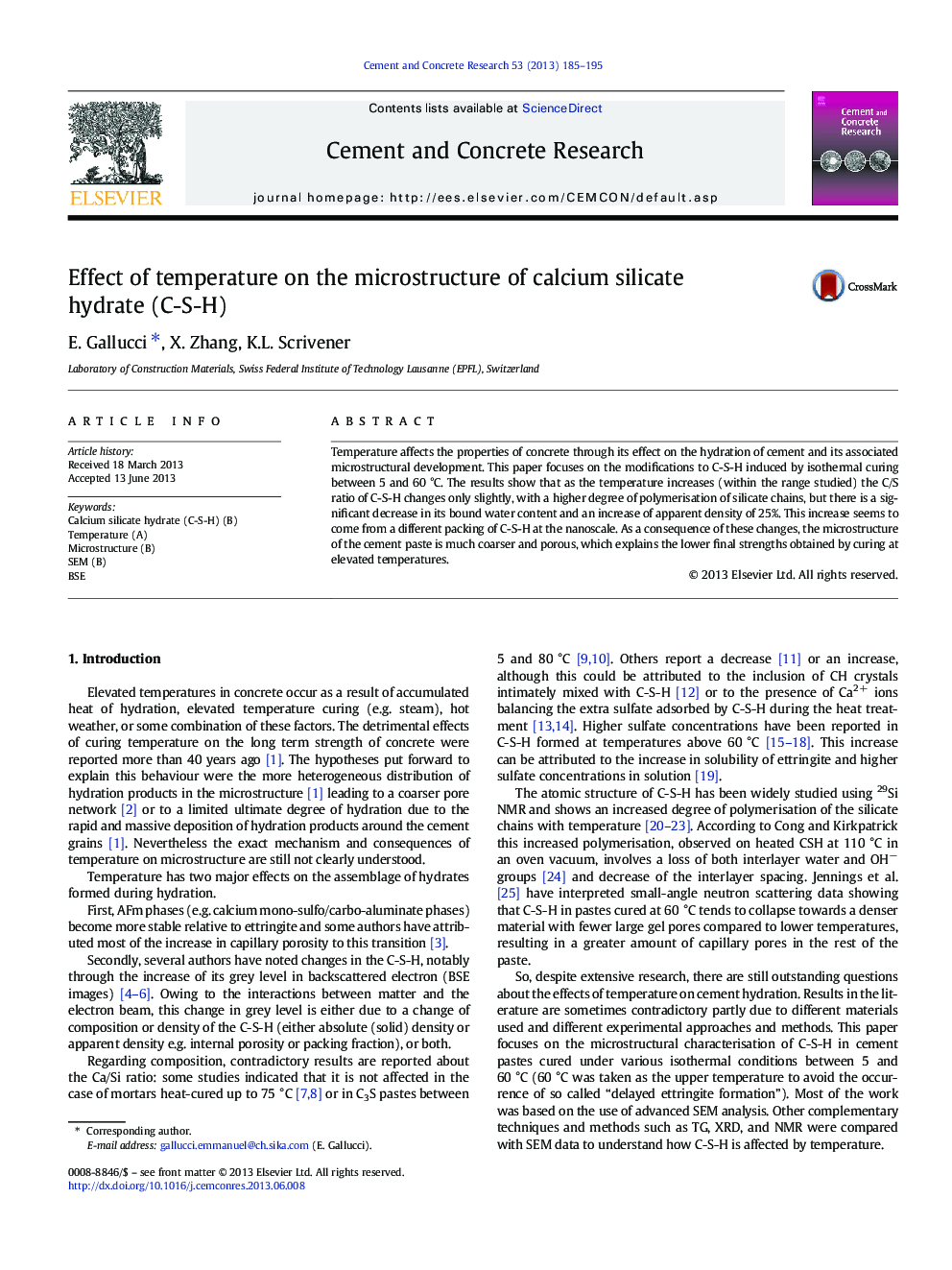| Article ID | Journal | Published Year | Pages | File Type |
|---|---|---|---|---|
| 1456422 | Cement and Concrete Research | 2013 | 11 Pages |
•C-S-H structure studied at the atomic level•Multiple analytical techniques used•Studies conducted at temperatures above and below normal temperatures
Temperature affects the properties of concrete through its effect on the hydration of cement and its associated microstructural development. This paper focuses on the modifications to C-S-H induced by isothermal curing between 5 and 60 °C. The results show that as the temperature increases (within the range studied) the C/S ratio of C-S-H changes only slightly, with a higher degree of polymerisation of silicate chains, but there is a significant decrease in its bound water content and an increase of apparent density of 25%. This increase seems to come from a different packing of C-S-H at the nanoscale. As a consequence of these changes, the microstructure of the cement paste is much coarser and porous, which explains the lower final strengths obtained by curing at elevated temperatures.
